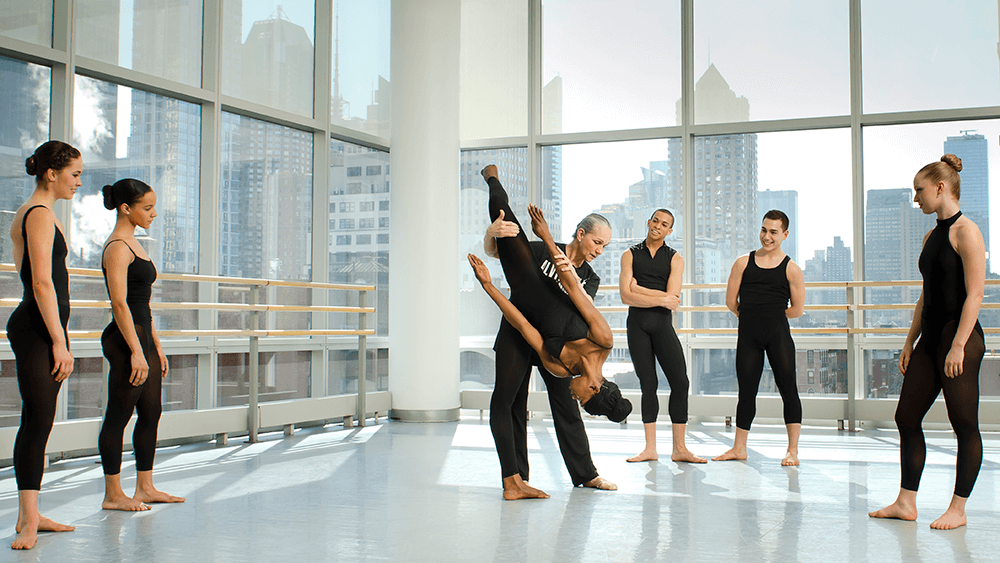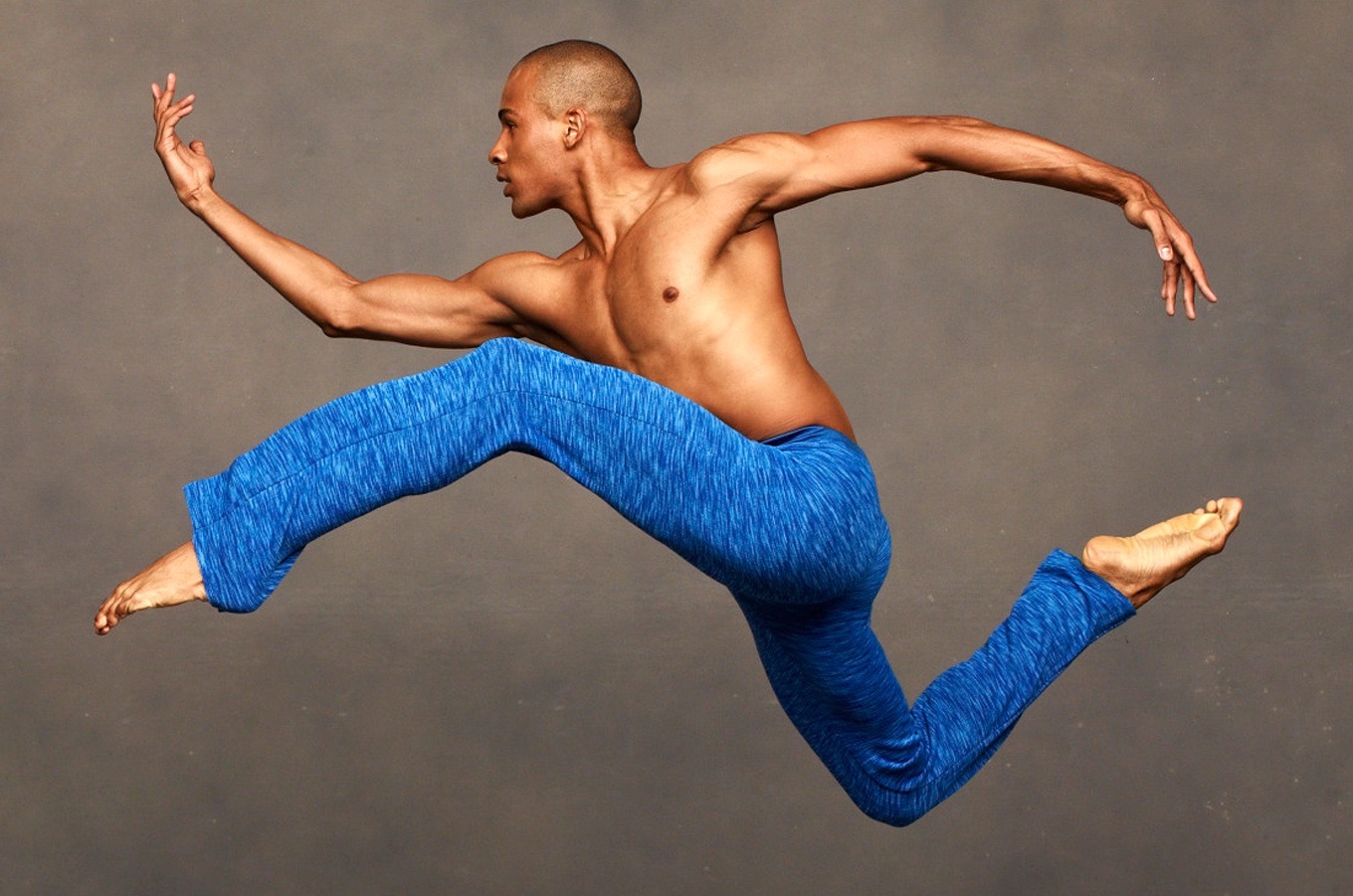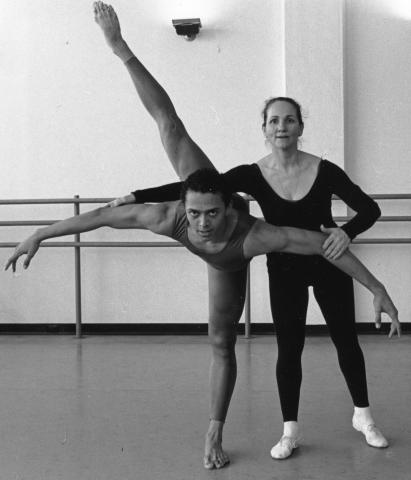Exploring the Horton Technique
Posted February 9, 2023

In Conversation with Ana Marie Forsythe
Ana Marie Forsythe discovered the Horton technique at age 12 and quickly fell in love with its blend of Native American dances, anatomical studies, and other movement influences. Today, the Jersey-born dancer is one of its foremost experts.
Since her start as an educator at The Ailey School in 1973, Forsythe has been dedicated to keeping the integrity and legacy of the Horton Method center stage. She developed all four levels of the Horton curriculum at The Ailey School. Much of this exhilarating and dynamic technique can be seen in various classics by Alvin Ailey, including his masterwork, Revelations.
Forsythe discusses her first steps into the dance world and the significance of the Horton technique below.
What called you to dance?
I had an older sister and she had started taking dance. I wanted to do everything she did, so I started taking ballet classes at the school of the Garden State Ballet. When I took that first class, that first grand plié, I knew it was right. It was what I wanted to do. It was fabulous!
What is the Horton technique?
The Horton technique was created by a man named Lester Horton in southern California. He had a company that included Mr. Ailey, Carmen de Lavallade, Joyce Trisler, and James Truitte—some of the most wonderful dancers of the time. When Lester died, Mr. Ailey took over the company briefly out in California, and then everyone came to New York City because that’s where dance was.
Was that your first experience with the Horton technique, and what drew you to it?
[Joyce Trisler] was invited to teach at the school of the Garden State Ballet. She was a very strikingly beautiful woman: she was demanding and fierce, funny and intelligent. My mother had died so this was a gorgeous figure that filled a big gap in my life. And it turned out I was good! When I was 14, she asked me to dance with her company, so I must have been okay.
You literally wrote the book on the Horton technique, Dance Technique of Lester Horton. What was the process for writing it?
It took Marjorie Perces [who had studied with Lester Horton] and I probably six years to write that book. When Marjorie and I wrote the book, and I became chair of the Horton department at The Ailey School, I had to make up a syllabus for all four years, so that made me much more thoughtful about how to preserve what was left to me, to us.
I think Alvin made a huge contribution to anyone being interested in the technique being preserved.
What projects have been explored to preserve the technique and Lester Horton’s legacy?
I think Alvin made a huge contribution to anyone being interested in the technique being preserved. I mean this exciting company, his choreography, which really uses a lot of the technique, was so appealing that it became popular. It was, “I want to study that technique; I want to look like those dancers.” I guess Marjorie and I were interested in saying, “This is all going to change, this is all going to be lost if we don’t, somehow, write it down.” Then, of course, I made six DVDs with a high school friend of mine for DanceSpotlight.com. So, I’ve got six DVDs out there that preserve the technique, or at least where it was at that point in time.
What were your interactions with Mr. Ailey while he was here?
Alvin would come in and take class with me when he performed at City Center with the Company for the galas. He would come in and watch a class, and of course, the students would all be terrified that he was there. I always felt he was supportive, I guess because I was so close to Marjorie Perces, and he just loved Marjorie. I think he was grateful that there was someone teaching Horton who had some authority, studied enough, and was giving them the real thing. He would say, “Did you teach 5/4 swing today, Mrs. Forsythe?” and I’d say, “No, not today, Alvin.” It was one of his favorite questions.
Assistant Rehearsal Director of Alvin Ailey American Dance Theater Clifton Brown with Ana Marie Forsythe. Photo by Marbeth.
What was it like starting the Ailey/Fordham BFA Program?
It was [former Director of The Ailey School] Denise Jefferson’s idea that dancers were smart enough to do two things at the same time. They could study dance and they could go to college. I worked with her and Ed Bristow on creating the Ailey/Fordham BFA Program. I was there in the very beginning and wholeheartedly agreed with Ms. Jefferson. And it was wonderful. In the old days, you either danced or went to college.
What trends are you seeing in the dance world?
I think that dance has been broadened. It used to be that you were either a ballet dancer, a Broadway dancer, or a modern dancer, and I think the lines are now overlapping. You see some of our people doing company work, but they’re also doing Broadway and they’re also teaching, so I think that it’s expanded. We’re not pigeonholed in the way we used to be and, in many ways, that’s great because that means there are more jobs available, and more opportunities. As a result of that, I think the training is much more foundational.
Any final thoughts?
You have some people like Judith Jamison, who exemplifies so much beauty about the Ailey company and she is a spectacular presence; she used to take Horton classes. I’ve had wonderful opportunities to work with some spectacular people and I still love teaching beginners, giving them their first taste of Horton. I’ve been teaching here since 1973 and that’s a lot of time passed, but it’s still fun!
Want more stories like this in your inbox? Sign up for Ailey News and be the first to know when a new post hits the Ailey Blog.

